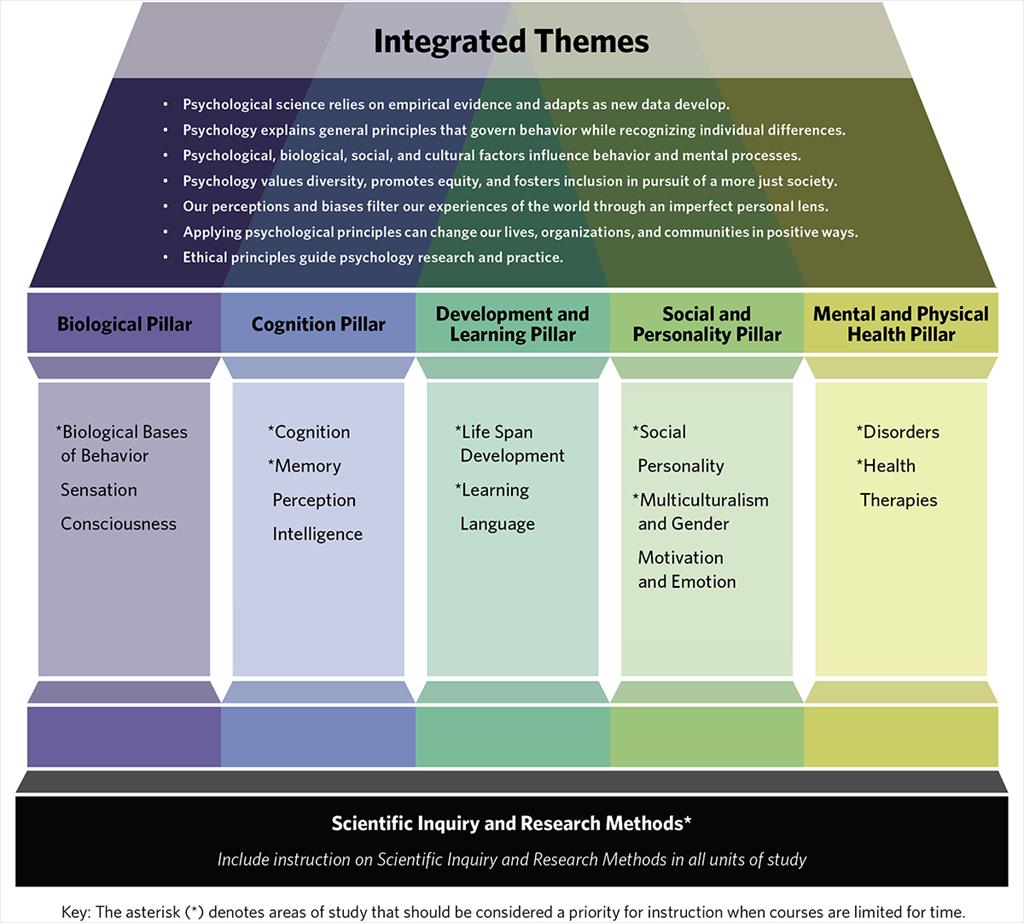
Third revision of APA’s high school curricula standards approved in February 2022.
By Tina Athanasopoulos Last updated: April 12, 2022 Date created: March 28, 2022 4 min readAthanasopoulos,, & Tina, (2022, April 12). National Standards for High School Psychology Curricula. https://www.apa.org/ed/precollege/psychology-teacher-network/introductory-psychology/national-standards
The National Standards for High Schoology Psychology Curricula (the “National Standards”) is a document that has been used by psychology high school teachers across the country for more than 20 years. It is a guide for teachers to identify what content needs to be taught in their classes, and also offers curriculum alignment across the nation. The National Standards were first approved by APA’s Council of Representatives in 1999, then subsequently revised in 2005 and 2011. This newest revision was adopted in February 2022 and is now available online for teachers and other stakeholders. The drive for this current update was to focus the field of psychology as a science and align with the APA Introductory Psychology Initiative’s (IPI) work. The ultimate goal of this alignment is to have students exposed to the field of psychology in high school continue their studies at the undergraduate level and reiterate the same vocabulary and terminology throughout their education.
The working group members for this current revision strongly believed it was important to focus on scientific inquiry and research methods as a foundation of the class, regardless of where the psychology course is taught at the teacher’s high school. Teachers should teach these topics as a foundation of the course, and not as a single unit or chapter. This content should also be continuously referred to throughout the curriculum and reviewed so students can understand the importance of science in our field. Psychology is a science and students’ first exposure to the field should be recognized as such. The standards website now has a page of vetted teaching resources to support all teachers in teaching psychology as a science.
In addition to the focus on scientific inquiry and research methods, there are five pillars (previously called Domains in earlier iterations of the National Standards) represented by each area of psychology which should be a major part of a teacher's focus. These five pillars are: Biological; Cognition; Developmental and Learning; Social and Personality; and Mental and Physical Health. There are content standards associated with each unit of study, together with corresponding learning targets. There are also seven integrative themes that teachers should reflect on with their students. These themes were created by APA’s IPI Steering Committee. The integrated themes exhibit how psychology is inherently interconnected. These themes sit atop the pillar model (see diagram below).

The visual of the pillar model, which is also based on the work of IPI, identifies 10 areas of study that should be considered a priority for instruction when such courses are limited in time. Some teachers only have one semester to teach psychology, while others have an entire school year to teach psychology one and two semester courses. There are endless differences across schools on how psychology is taught at the regular level. There are also many differences with teacher preparation and credentialing. Teachers may have other priorities in their teaching loads throughout the day and psychology may be one of many classes being taught. The standards working group wanted to identify the units of study that should be a priority to assist teachers in their curriculum planning.
The Working Group members and APA TOPSS Committee want to make sure teachers across the nation use these standards to assist them when planning curriculum. We plan to have presentations at national and local conferences to help disseminate the standards. In order for the standards to reach psychology teachers across the country, we will need assistance from all psychology teachers, especially those involved in APA and TOPSS. We encourage all teachers to share the standards with other teachers in their districts, regional networks and across the nation. Ideally, we would want all 50 states plus the District of Columbia to adopt the national standards for psychology. APA is developing a comprehensive dissemination plan to broadly share the standards with teachers and other important stakeholders. Please let TOPSS know if you want to get involved in advocacy efforts in your state, or if your school district adopts or adapts these standards for schools in your district.
I have been teaching psychology at both the Advanced Placement and regular levels for the past twenty-five years. I vividly recall what it was like to start teaching and not know where to begin. I was a novice teacher that relied on the first approved APA standards in 1999. At that time, there were no resources available online and regular psychology textbooks were scarce. Today, there are plenty of such resources. I am excited for these standards to help all teachers inspire a new generation of students to learn about the fascinating field of psychology.

Tina Athanasopoulos, MA, CAS, currently teaches at Prospect High School in Township District 214 in the northwest suburbs of Chicago. She has been teaching Advanced Placement and Regular Psychology for 25 years. She has also been an adjunct professor in the education department at North Park University for the past 13 years.